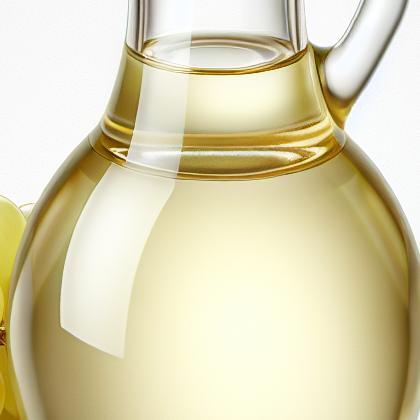White Wine

Vinegar is a liquid consisting mainly of acetic acid (CH3COOH) and water. The acetic acid is produced by the fermentation of ethanol by acetic acid bacteria. Vinegar is now mainly used as a cooking ingredient, but historically, as the most easily available mild acid, it had a great variety of industrial, medical, and domestic uses, some of which (such as a general household cleanser) are still promoted today.Commercial vinegar is produced either by fast or slow fermentation processes. In general, slow methods are used with traditional vinegars, and fermentation proceeds slowly over the course of months or a year. The longer fermentation period allows for the accumulation of a nontoxic slime composed of acetic acid bacteria. Fast methods add mother of vinegar (i.e., bacterial culture) to the source liquid before adding air using a venturi pump system or a turbine to promote oxygenation to obtain the fastest fermentation. In fast production processes, vinegar may be produced in a period ranging from 20 hours to three days.
White Wine Vinegar Pairs With:

White Wine Vinegar Properties:
| Food Property | Type | Description |
|---|---|---|
| Flavor Profile | Sour | White Wine Vinegar has a pronounced sour taste due to acetic acid content. |
| Aroma | Fermentation | White Wine Vinegar has a fermentation aroma, resulting from the process of converting wine into vinegar. |
| Chemical Composition | Acidity/Alkalinity (pH) | White Wine Vinegar typically has a pH level ranging from 2.4 to 3.4. |
| Nutritional Value | Macronutrients | White Wine Vinegar is low in macronutrients, providing only minimal calories. |
| Color | Maillard Reaction | White Wine Vinegar does not undergo the Maillard reaction as it is a liquid and not subjected to high heat. |
| Cooking Behavior | Heat Conductivity | White Wine Vinegar does not conduct heat as it is a liquid used primarily for flavoring and dressing. |
| Aroma | Volatile Compounds | White Wine Vinegar contains volatile compounds that contribute to its characteristic aroma. |
Food Pairing App - Version 1.2.0
